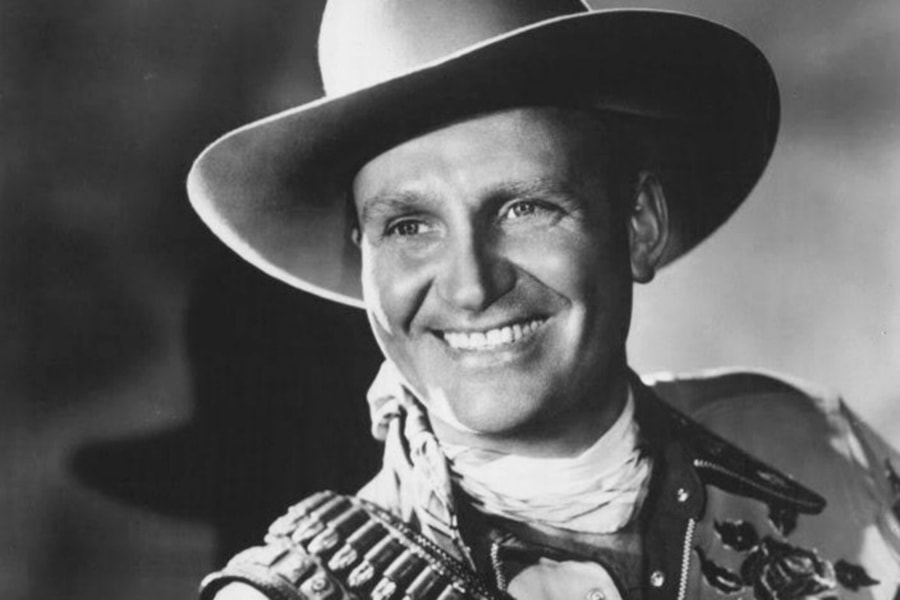As we have seen in my previous column, cowboy music originated during the early cattle drives in the second half of the 19th century. It was primarily an oral tradition, with songs and poems passed down from cowboy to cowboy. Since these songs were stored in each one’s memory, there were countless variations of a single song. Only when the songs and poems were written down in the early 1900s did their words remain constant.
The image of the singing cowboy first reached the attention of the public in 1925 when Carl T. Sprague of Texas recorded the cowboy song, When the Work’s All Done This Fall. A year later, John I. White became the first representative of the genre to perform on a nationally broadcast radio show, but the full popularity of the singing cowboys was not reached until the spread of sound films.
Ken Maynard has the distinction as the screen’s first singing cowboy. He had appeared as a trick rider in Buffalo Bill’s Wild West Show and fought in the First World War before acting and doing stunt work in silent motion pictures on his white stallion, Tarzan. His horsemanship and rugged good looks made Maynard a cowboy star. He recorded two songs with Columbia Records, The Lone Star Trail and The Cowboy’s Lament, before making his first film, Sons of the Saddle, in 1930. It included a musical soundtrack in which he sang two songs. Unfortunately, Maynard’s hard drinking and reckless ways hampered him from becoming the star he could have been.
While other early movie stars, such as John Wayne, dabbled in singing roles, Gene Autry rose to become the most famous singing cowboy of the 1930s. Unlike Wayne, who was an indifferent singer, Autry could ride and sing. Beginning with the 1935 film serial, The Phantom Empire, he quickly rose to stardom and, before long was known as the Singing Cowboy. Autry was so successful that, at the time of his death in 1998, Autry was still on the top 10 list of Hollywood western box office moneymakers.
The only rival to Autry’s incredible success was a young cowboy by the unlikely name of Leonard Slye who had actually appeared in a minor role with Autry in 1935. He got his first chance at a major role when Autry walked out on his contract with Republic Pictures in 1937. Slye was redubbed with the stage name, Roy Rogers, and went on to star in Under Western Stars. When Autry returned to movies, he found himself challenged as the top singing cowboy. And, when Autry went off to serve in the Second World War, his rival soon became the King of the Cowboys. While Roy Rogers, with his group, the Sons of the Pioneers, never reached Autry’s level of record sales, his movie stardom rivaled Autry’s for decades to come.
With the advent of television, the making of singing cowboy movies dropped off and the era of singing cowboys was coming to an end. Autry and Rogers went on to star in their own television shows but these did not last past the 1950s, and the singing cowboy gradually ceased to exist in popular culture.
Ken Mather is a Spallumcheen-based author. He can be reached through www.kenmather.com.
